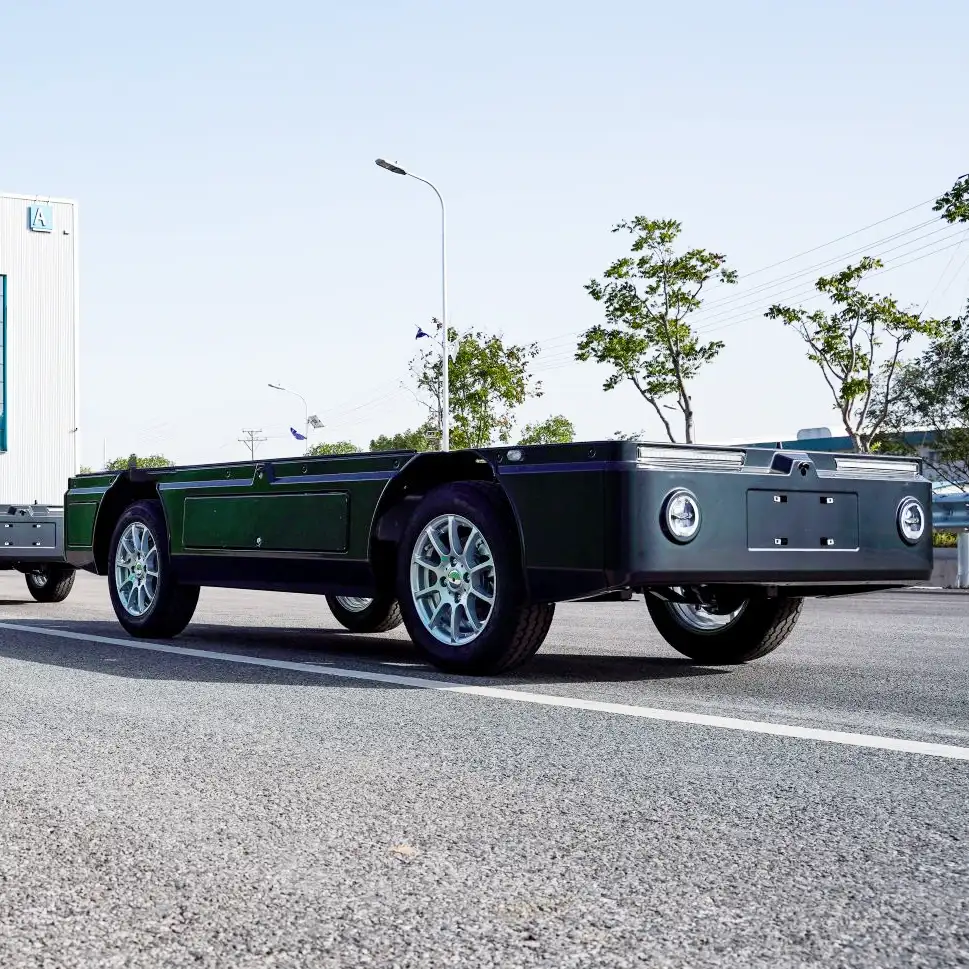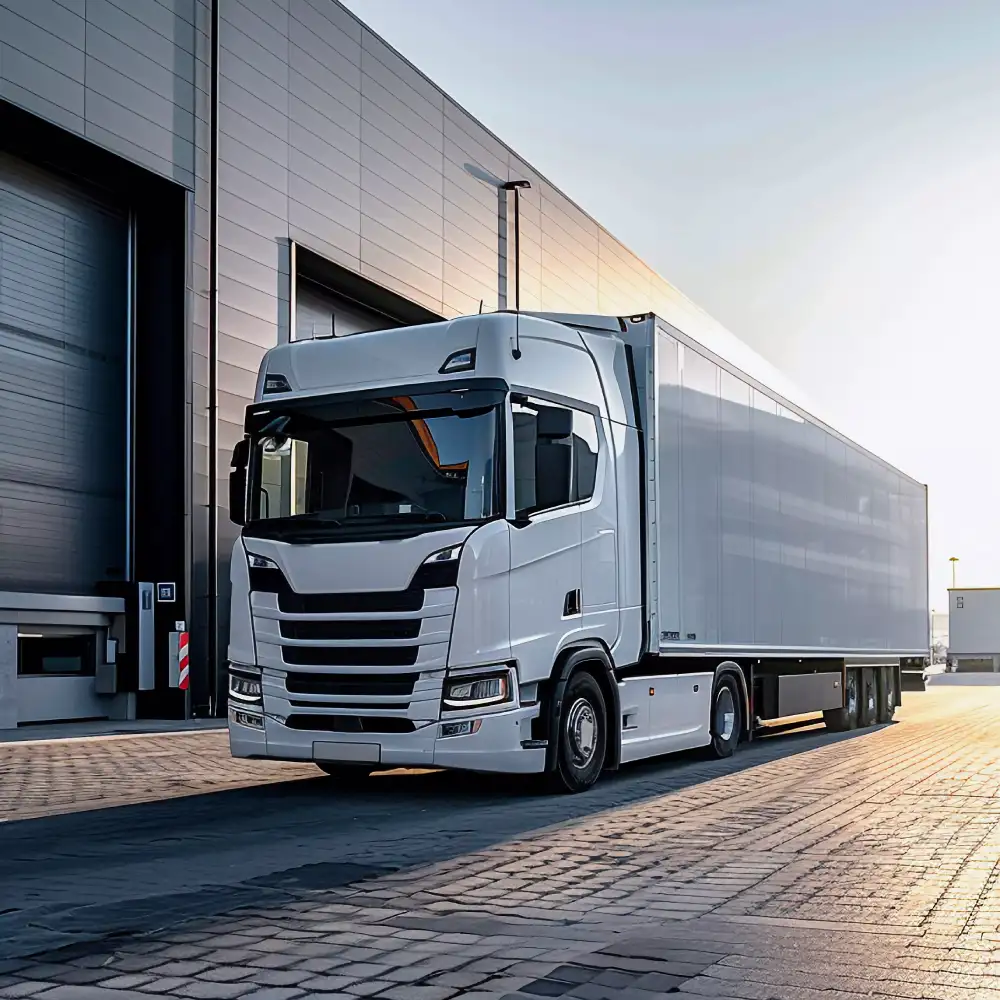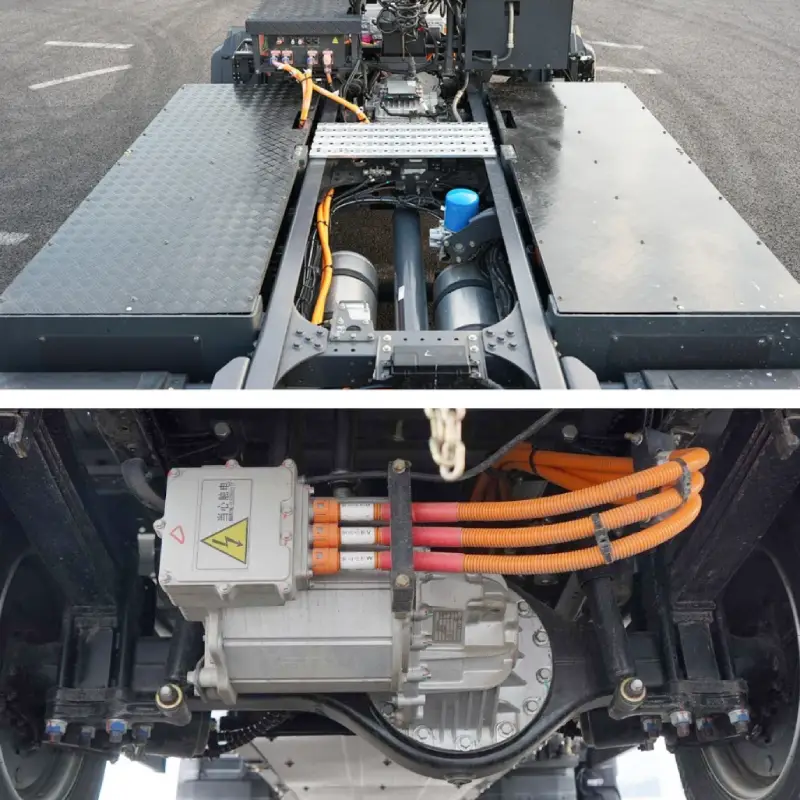Low-Speed Autonomous Vehicles: Powering the Future of Smart Cities
Low-Speed Autonomous Vehicles: Powering the Future of Smart Cities As artificial intelligence and autonomous driving technologies continue to evolve, low-speed autonomous vehicles are emerging as a key enabler of smart city development. These functional self-driving EVs are now commercially deployed across a variety of applications—from urban logistics and last-mile delivery to city services and tourism—accelerating the digital and green transformation of cities worldwide. At Brogen, our innovative autonomous vehicle platforms—such as the OEW7-based driverless delivery vehicles and autonomous sightseeing shuttles—are designed to meet the growing demand for intelligent, sustainable transportation. Built on our purpose-developed autonomous vehicle chassis, they represent a new wave of mobility that combines low-speed electric operation with cutting-edge automation. Smart Urban Logistics with Driverless Delivery Vehicles Low-speed electric autonomous delivery vehicles, particularly those operating at L4 levels of automation, offer a tech-driven solution for modern urban logistics. These vehicles help reduce operational costs, increase delivery efficiency, and operate seamlessly 24/7—reshaping the way goods move through cities. Our OEW7-based driverless delivery vehicle has already been deployed at scale across nearly 100 cities, both domestically and internationally. By enabling uninterrupted, around-the-clock autonomous deliveries, these vehicles shorten delivery cycles, cut labor costs, and reduce fuel consumption. Brogen Low-Speed Autonomous Vehicle Chassis Unlike conventional trucks, these self-driving delivery vehicles operate as part of a smart logistics network—essentially creating a city-level AGV (Automated Guided Vehicle) system. Imagine a scenario where fleets of autonomous EVs deliver goods overnight between sorting hubs and local depots, functioning like a “city conveyor belt” to reduce congestion, energy usage, and environmental impact. Equipped with high-precision sensors and real-time communication systems, our low-speed autonomous vehicles continuously collect and transmit data on traffic flow, environmental conditions, and urban infrastructure usage. This data-driven approach enables city planners and administrators to make more informed decisions, optimize resource allocation, and improve urban management efficiency. Green and Sustainable Mobility for Carbon-Neutral Cities Built with lithium-ion battery technology, low-speed autonomous vehicles inherently promote green mobility. With zero tailpipe emissions and significantly lower energy consumption compared to internal combustion engine (ICE) vehicles, these electric self-driving vehicles play a crucial role in reducing urban carbon footprints. Electric Low-speed autonomous delivery vehicle based on Brogen autonomous vehicle chassis platform For example, our OEW2-based electric autonomous delivery vehicle leverages advanced energy management systems to achieve both high efficiency and low emissions. Compared to gasoline-powered vehicles, each kilometer driven reduces carbon emissions by 39%—and by up to 56% compared to diesel trucks. These advantages not only align with global carbon neutrality goals but also support the development of low-carbon urban energy markets. As a leading EV solution provider, we believe that low-speed electric autonomous vehicles are not just environmentally friendly—they’re essential to the future of sustainable, smart cities. Driving Innovation in Smart City Infrastructure In summary, low-speed autonomous vehicles represent more than just a transportation trend—they are a vital part of the infrastructure for next-generation smart cities. By integrating electric powertrains, intelligent control systems, and AI-powered automation, these vehicles are transforming how cities operate and grow. As we move forward, Brogen remains committed to delivering customized, scalable EV solutions that empower low-speed automated driving systems and enable sustainable city development. With continued innovation, we will help cities worldwide unlock the full potential of low-speed self-driving vehicles, paving the way for a smarter, greener future. Looking to accelerate your autonomous vehicle project? Learn more here to explore customized autonomous vehicle chassis solutions: https://brogenevsolution.com/autonomous-vehicle-chassis/ You can also contact us via contact@BrogenEVSolution.com or use the contact form below. We usually respond within 2 business days. Contact Us Get in touch with us by sending us an email, using the Whatsapp number below, or filling in the form below. We usually reply within 2 business days. Email: contact@brogenevsolution.com Respond within 1 business day Whatsapp: +8619352173376 Business hours: 9 am to 6 pm, GMT+8, Mon. to Fri. LinkedIn channel Follow us for regular updates > YouTube channel Ev systems introduction & industry insights > ContactFill in the form and we will get in touch with you within 2 business days.Please enable JavaScript in your browser to complete this form.Please enable JavaScript in your browser to complete this form. Name * FirstLast Work Email *Company Name *Your Project Type *– Please select –Car, SUV, MPVBus, coach, trainLCV (pickup truck, light-duty truck, etc.)HCV (heavy-duty truck, tractor, trailer, concrete mixer, etc.)Construction machinery (excavator, forklift, crane, bulldozer, loader, etc.)Vessel, boat, ship, yacht, etc.Others (please write it in the note)Your Interested Solutions *– Please select –Motore-AxleBatteryChassisAuxiliary inverterOBC / DCDC / PDUAir brake compressorEPS / EHPS / SbW / eRCBBTMSOthers (please write it in the note)Do you have other contact info? (Whatsapp, Wechat, Skype, etc.)Please introduce your project and your request here. * Checkbox * I consent to receive updates on products and events from Brogen, and give consent based on Brogen’s Privacy Policy. Submit








